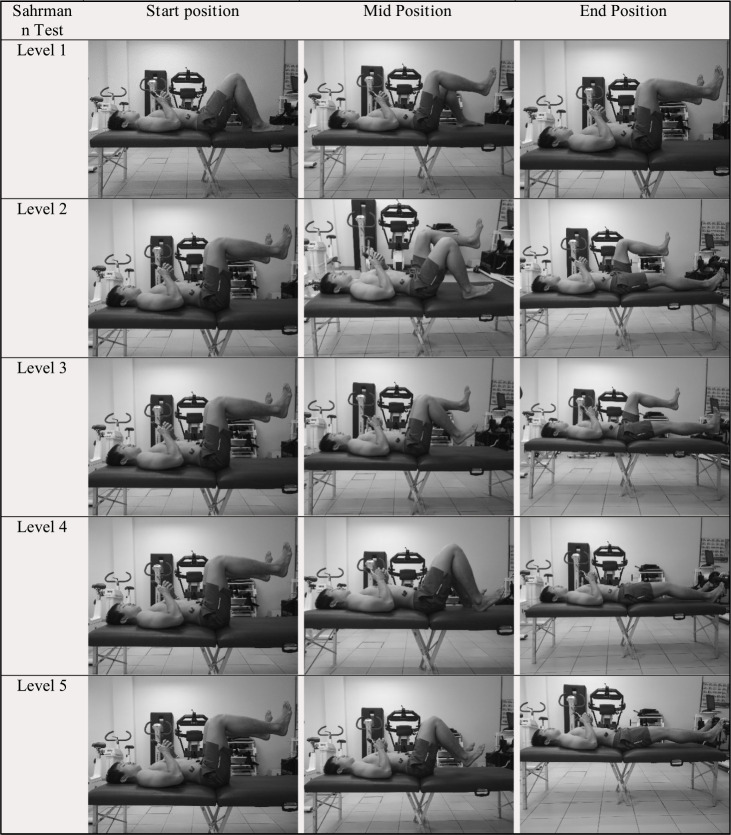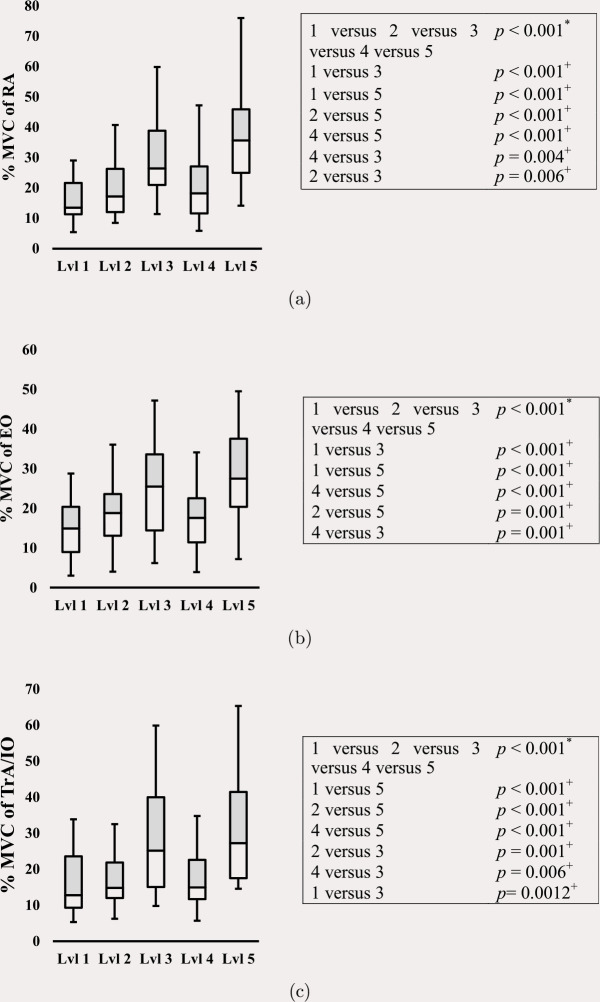Abdominal muscle activation: An EMG study of the Sahrmann five-level core stability test.
IF 1
Q4 REHABILITATION
Hong Kong Physiotherapy Journal
Pub Date : 2020-12-01
Epub Date: 2020-03-10
DOI:10.1142/S1013702520500080
引用次数: 12
Abstract
Background: Sahrmann five-level core stability test protocol has been used to evaluate the ability of the core muscles to stabilize the spine. However, validation studies on the Sahrmann protocol are limited. Objective: The purpose of this study was to compare the different levels of Sahrmann five-level core stability (levels 1–5) on the muscle activity of rectus abdominis (RA), external oblique (EO), and transverse abdominis/internal oblique (TrA/IO). Methods: Twenty-two asymptomatic male participants aged 21.36±1.59 years were recruited. Participants were instructed to perform maximum voluntary contraction (MVC) and five levels of Sahrmann five-level core stability test guided with a pressure biofeedback unit (PBU). The surface electromyography (EMG) data of each muscle during five levels of Sahrmann five-level core stability test were normalized as a percentage of MVC. Results: Results showed significant differences in the normalized EMGs of RA [χ2(4) = 64.80, p<0.001], EO [χ2(4) = 58.11, p<0.001], and TrA/IO [χ2(4) = 56.00, p<0.001] between the five levels of Sahrmann five-level core stability test. Post-hoc analysis revealed Sahrmann levels 5 and 3 have significantly higher abdominal EMG signals than levels 4, 2, and 1 (p<0.001). Conclusion: In conclusion, the Sahrmann five-level core stability test differs according to the level of Sahrmann tests. Significantly higher abdominal muscle activities were observed during levels 3 and 5. Therefore, the classification exchange in levels 3 and 4 of the Sahrmann five-level core stability test should be reconsidered in the future.



腹肌激活:Sahrmann五级核心稳定性测试的肌电图研究。
背景:Sahrmann五级核心稳定性测试方案已被用于评估核心肌肉稳定脊柱的能力。然而,对Sahrmann协议的验证研究是有限的。目的:本研究的目的是比较不同水平的Sahrmann五级核心稳定性(1-5级)对腹直肌(RA)、腹外斜肌(EO)和腹横/内斜肌(TrA/IO)肌肉活动的影响。方法:招募22名无症状男性,年龄21.3 6±1.59岁。指导参与者进行最大自愿收缩(MVC)和五个级别的Sahrmann五级核心稳定性测试,指导压力生物反馈单元(PBU)。将Sahrmann五级核心稳定性试验中各肌肉的表面肌电图(EMG)数据归一化为MVC的百分比。结果:Sahrmann五水平核心稳定性试验结果显示,RA [χ 2 (4) = 64.80, p .001]、EO [χ 2 (4) = 58.11, p .001]、TrA/IO [χ 2 (4) = 56.00, p .001]的归一化肌电信号在5个水平间差异均有统计学意义。事后分析显示,Sahrmann 5级和3级的腹部肌电图信号明显高于4级、2级和1级(p 0.001)。结论:综上所述,Sahrmann五级核心稳定性测试根据Sahrmann测试水平的不同而不同。在第3级和第5级观察到明显较高的腹肌活动。因此,未来应重新考虑Sahrmann五级核心稳定性测试中第3级和第4级的分类交换。
本文章由计算机程序翻译,如有差异,请以英文原文为准。
求助全文
约1分钟内获得全文
求助全文
来源期刊

Hong Kong Physiotherapy Journal
REHABILITATION-
CiteScore
2.30
自引率
6.70%
发文量
13
审稿时长
24 weeks
期刊介绍:
The Hong Kong Physiotherapy Journal is the official journal of the Hong Kong Physiotherapy Association Limited (HKPA Ltd). This peer-reviewed journal aims to contribute to and document the advancements in the principles and practice of physiotherapy in Hong Kong.The Hong Kong Physiotherapy Journal is published annually and papers are categorized into research reports, treatment reports, technical reports, literature reviews, and letters to the editor.
 求助内容:
求助内容: 应助结果提醒方式:
应助结果提醒方式:


